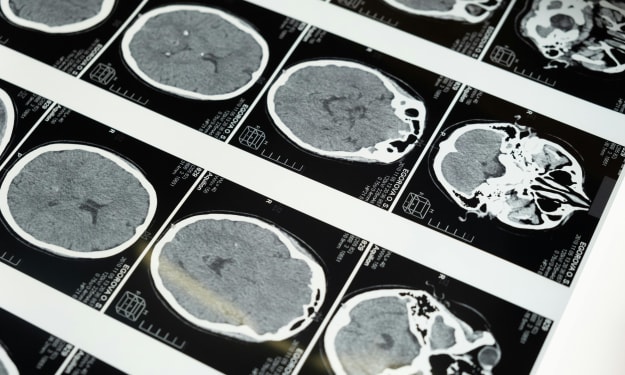
Let's start by discussing some of the functions of various areas on the brain that way we can better understand what's going on during a seizure so you are looking at a human cerebrum now this has been removed or was removed in a dissection course that we held here in the lab by one of our students and so you're going to see some cut marks from the surgical equipment used
To remove the brain this is a fantastic dissection and you can see a lot of fantastic anatomy but another thing to mention right away are all of the blood vessels and these blood vessels are actually embedded inside of this tissue that we can lift up with my probe here this is part of the meningeal system and it wraps the entire brain so you're seeing about two of the three layers of
The meningeal system here and the blood vessels are just embedded inside but if we could remove this you would then see this color of tissue over the entirety of the brain now this surface tissue here this is called the cortex of the brain cortex just means surface and the cortex of the brain is going to be made up of neurons a lot of neurons neurons are the cells of communication and in the brain it's estimated
There are around 86 billion of them all communicating back and forth with one another and that's where consciousness is going to come from but we can also divide the entirety of the brain into different lobes or sections. The frontal lobe surprise is where you're going to find personality rational decision making morality all the things that make us human but really important is also where you're going to find motor control there we have what's called the parietal lobe and the parietal lobe is where sensory information is going to be coming from from different parts of the body but there's an area called the primary somatosensory cortex and this is where you're going to get information coming from various parts of your body like here like if i'm poking my hand here with my probe well that's going to this aspect of my parietal lobe and saying hey you're getting poked in the hand then on the back we have the occipital lobe the occipital lobe and i can even lift it up here the occipital lobe just could be this posterior part of the brain here this is
Where visual information is going to be processed so i mean you can literally say kind of like you have eyes in the back of your head then if i rotate it back this way and then lift it up again you can see that incision from the surgical equipment this part of the brain here is called the temporal lobe and the temporal lobe is where we get auditory processing so think like sound is going
To get processed here it's extremely important to mention the differences between seizures and epilepsy because they're often confused for one another and they are not one in the same seizures broadly speaking are going to be a sudden surge of electrical activity in the cortex of the brain, epilepsy on the other hand is a disease involving recurrent unprovoked seizures meaning we don't know what causes them.
But there are multiples of them so that means that you can have seizures but not suffer from epilepsy meaning there are non-epileptic seizures and epileptic seizures in an epileptic seizure what we see is that sudden surge of electrical activity in the cortex of the brain but we have no idea what's causing it , there are theories and hypotheses and we do have some ideas in some cases.
We don't know what causes that but we see that electrical activity occurring with the use of an electroencephalogram or an eeg and that's going to be very important to the diagnosis of epilepsy in a non-epileptic seizure this is a provoked seizure so we're going to discuss this in greater detail in a moment but let's say just for example you get hit very hard in the head
That can cause a seizure to occur but that doesn't mean you have epilepsy now it just means that the head trauma itself caused it that's a provoked seizure and the last one is probably the least understood it's called a psychogenic non-epileptic seizure, this is something that is caused by psychological distress and it seems by all intents and purposes it seems like it's going to be epilepsy.
But then when you use an eeg on them you don't see any of that electrical activity you don't in the cortex of the brain which makes this very mysterious and like mentioned before not very well understood
There are a lot of different causes of seizures out there but broadly speaking we can narrow to things such as infections so if you recall this outer wrapping of the brain that is part of the meningeal system
Seizure and then you even have medications or substances as a cause so or maybe even just withdrawing from the substance, a lot of people out there understand that alcoholics when they are going through withdrawals they can actually be more prone to seizures then we have blood-related causes this is going to be things like a stroke high blood pressure or even brain bleeds like we previously discussed , it is also going to cause in having fever .






Comments
There are no comments for this story
Be the first to respond and start the conversation.